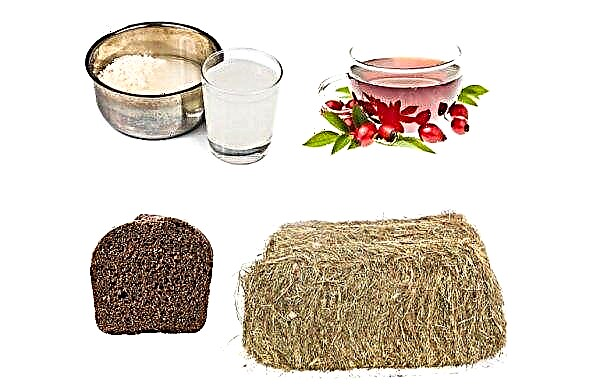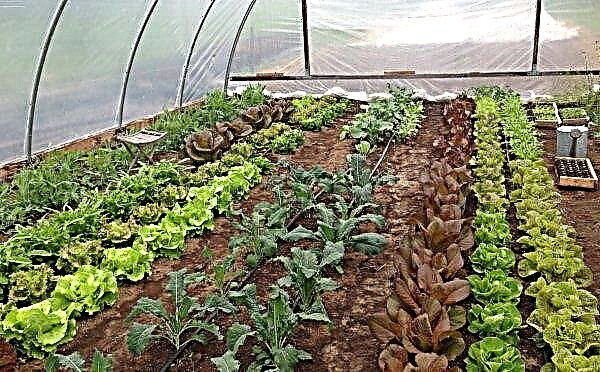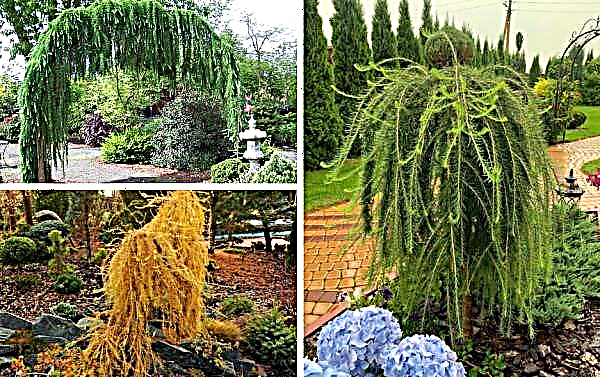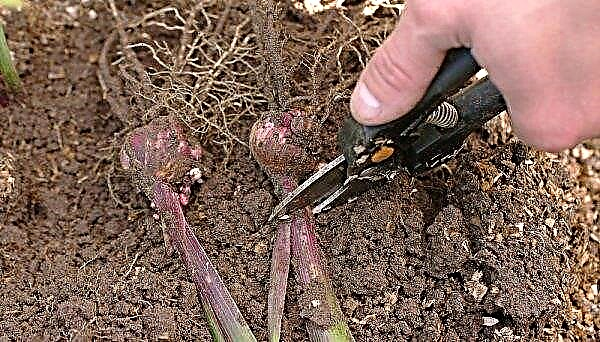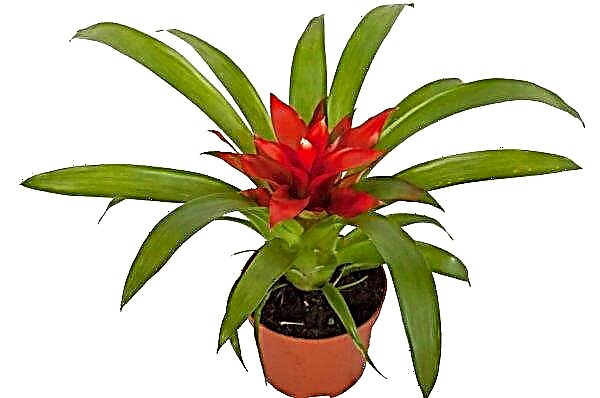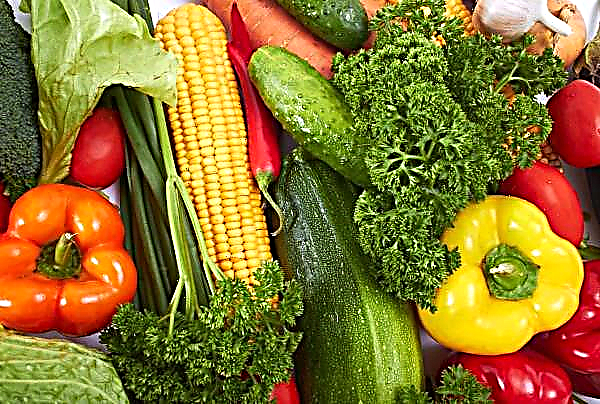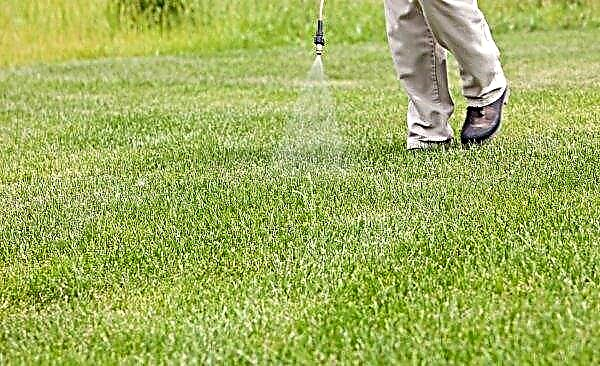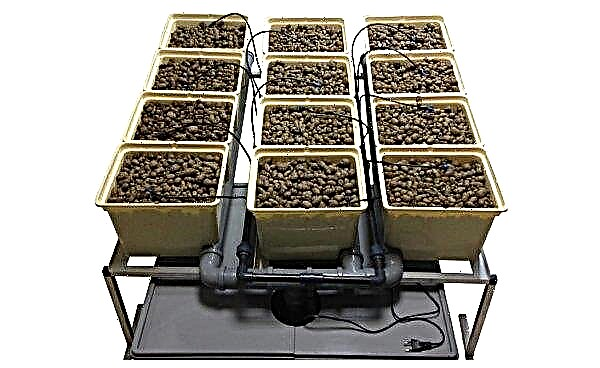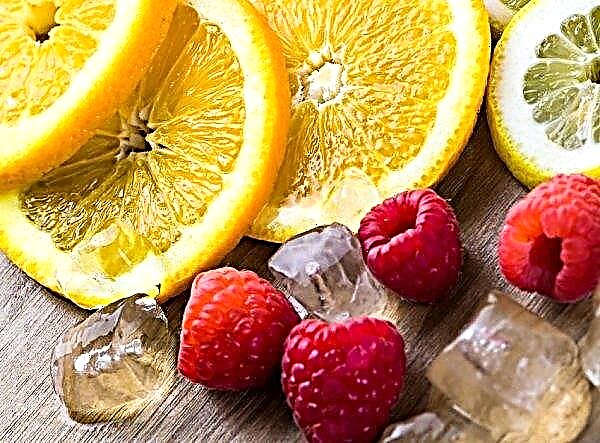The Mlecnik genus includes a large number of edible and good, conditionally edible mushrooms with good taste characteristics. One of them is Serushka. The description, nutritional qualities, value and methods of preparation of this representative of the mushroom kingdom can be found in the material.
Serushka Features
Serushka belong to the genus Mlechnik, the family of russula. This is a large mushroom with a diameter of the upper part of 5–10 cm. In young specimens, it is convex. In adulthood, it becomes like a funnel with a tubercle in the center. The edges of the hat are uneven, bent. The color of the upper part can be gray with pink or purple tint, as well as brown with gray. Often on the surface are not very noticeable concentric patterns.
Did you know? The fastest growing fungus in the world is common fun. Every minute she adds 5 mm in growth.
This mushroom is lamellar. The plates are rarely located, they can be meandering. Painted yellow. The stalk grows quite high - 5–9 cm. In thickness, it reaches 1.5–2.5 cm. In young specimens, it is dense, in mature specimens it is hollow in the middle. It resembles a cylinder in shape. It is painted in one tone with a hat or may be slightly lighter. The inner part of the fruit body is dense, white in color, gives a pleasant fruity aroma. During deformations, milky white juice is secreted, which does not change color after contact with air.
The inner part of the fruit body is dense, white in color, gives a pleasant fruity aroma. During deformations, milky white juice is secreted, which does not change color after contact with air.
Other names
Serushka is also found under other names.
So, in Latin, she has two synonyms:
- Agaricus lactifluus flexuosus;
- Lactifluus flexuosus.
Did you know? The largest mushroom in the world, dark honey agarics, is found in Oregon. Its mycelium occupies an area of 880 ha.
Most fungus mushrooms are known by such names:
- hollow gray;
- a lilac gray-lilac;
- gray milk;
- teardrop;
- subwort;
- plantain;
- serum;
- way;
- seroshka.
Distribution and collection time
In nature, silver grass can be found in Europe and Asia, in forests where birch and aspen prevail, as well as in mixed plantings. This mushroom prefers to grow in northern areas. Often it can be found in Siberia.
Serushki grow singly or in large groups, mainly in moist sandy loamy or loamy soils. They are common on forest edges, along the sidelines of paths and roads. If you are interested in how long the season for collecting bushes lasts, then their fruiting begins in July and ends in September.
Collection rules
Since the fruit bodies of cheryans tend to absorb harmful substances from the air and soil, they should not be collected in ecologically unfavorable places - near busy motorways, dumps, industrial enterprises. Mushrooms should be carefully cut, and not uprooted. In this way, they can achieve more than one crop. Serushka has no dangerous counterparts, however, if in the process of collecting doubts arise whether the mushroom is suitable for food, it is better to leave it in a clearing and not endanger your health.
Mushrooms should be carefully cut, and not uprooted. In this way, they can achieve more than one crop. Serushka has no dangerous counterparts, however, if in the process of collecting doubts arise whether the mushroom is suitable for food, it is better to leave it in a clearing and not endanger your health.
The nutritional value
Serushka is classified as conditionally edible mushroom of the third category of nutritional value. This means that before cooking the raw materials require additional heat treatment. Calorie content of 100 g of plant product is low - it is only 18.5 kcal. The same portion of mushrooms contains 1.8 g of protein, 0.8 g of fat and 1.1 g of carbohydrates.
Important! Salting mushrooms is necessary only in dishes made of glass, wood or coated with enamel. Iron (aluminum) containers are not suitable, as the product is oxidized in them.
Fruit bodies are rich in vitamins:
- IN 1;
- IN 2;
- WITH;
- E;
- PP
Minerals essential for the full functioning of the body contain:
- TO;
- Ca;
- Mg;
- Na;
- P;
- Fe.
 They also have a large amount of saturated, monounsaturated and polyunsaturated fatty acids.
They also have a large amount of saturated, monounsaturated and polyunsaturated fatty acids.
Cooking methods
Seroshka pulp has a pungent and bitter taste. These food "blemishes" disappear if the mushroom is pre-soaked and boiled. Soaking should last from one to three days. Mushrooms are placed in water with salt (1 tbsp of salt is added to 1 liter of water). Daily fluid is changed to fresh.
Before soaking, the seroshka is cleaned of dirt, worms, spoiled, dry, old specimens are examined and discarded, as well as those that have hats larger than 7 cm. After soaking, the raw materials are washed 2-3 times under running water. Boil mushrooms for 15-20 minutes, periodically removing the resulting foam, after which it is thrown back into a colander, allowing excess liquid to drain and dry. Seroshka is well suited only for pickling and pickling.
Important! For pickling, it is better to pick mushrooms in August - September. Such a product has many vitamins and will be stored for as long as possible.
The first dishes are not prepared from it, it is not subjected to frying. Pickle brine can be prepared from the calculation: 50-80 g of salt per 1 kg of mushrooms and 1 liter of water. Pour water into the pan, add salt and spices: cloves, pepper, bay leaf. After the brine boils, it must be boiled for about 5 minutes. Then cool and pour into sterilized jars, in which the mushrooms are previously laid. Close the container with the workpiece with a capron lid. Mushrooms are prepared for pickling in the same way as for pickling. Marinade is boiled from 400 ml of water, 1 tbsp. salt, 1-2 hours sugar, 10 peas of allspice, 5 pcs. cloves, 2 bay leaves, 1-2 onions, ½ carrots. The liquid is boiled until vegetables are ready. Then, 50-60 ml of vinegar (30%) and 1 kg of mushrooms are added to it. Cook for another 5-10 minutes, after which the earrings are laid out in clean jars, filled with marinade and cover with lids.
Mushrooms are prepared for pickling in the same way as for pickling. Marinade is boiled from 400 ml of water, 1 tbsp. salt, 1-2 hours sugar, 10 peas of allspice, 5 pcs. cloves, 2 bay leaves, 1-2 onions, ½ carrots. The liquid is boiled until vegetables are ready. Then, 50-60 ml of vinegar (30%) and 1 kg of mushrooms are added to it. Cook for another 5-10 minutes, after which the earrings are laid out in clean jars, filled with marinade and cover with lids.
Possible harm to the human body
Mushrooms should not be consumed in excessive quantities. They are "heavy" for digestion by the gastrointestinal tract, therefore, they can lead to digestive upset, which is accompanied by nausea, vomiting, diarrhea, and abdominal pain. Serushki can also put an additional burden on the liver and kidneys, so with caution they should be eaten by people who have problems in the activity of these organs.
Any mushrooms, and ways, including, are contraindicated for children under 6 years old, pregnant, lactating women, the elderly. So, Serushka is a common, conditionally edible mushroom that is used in cooking for pickling and pickling.
For cooking, it is important to select small and high-quality items. You can use such a product (when stored in a cold place) for six months. The appetizer goes well with second courses, and can also be an ingredient in winter salads.

